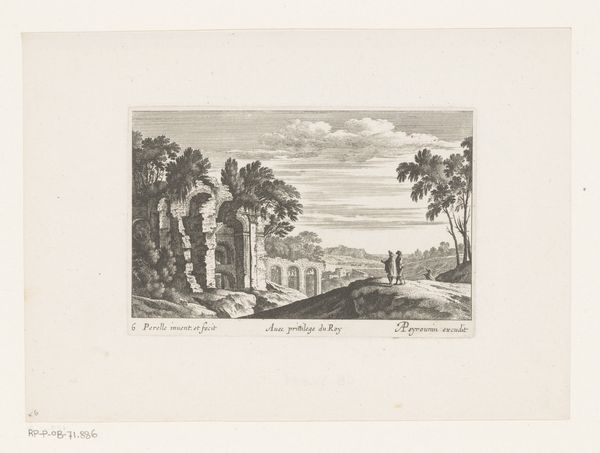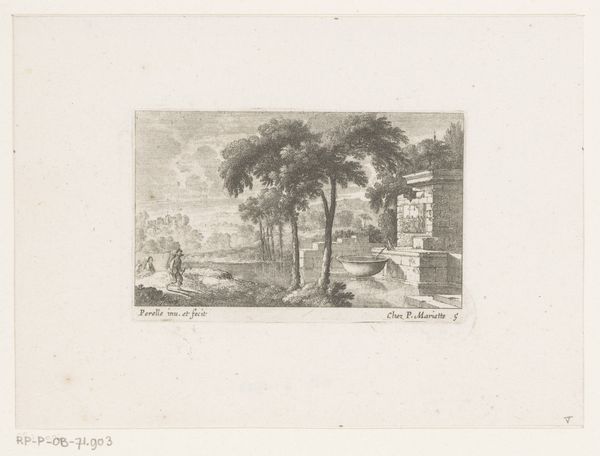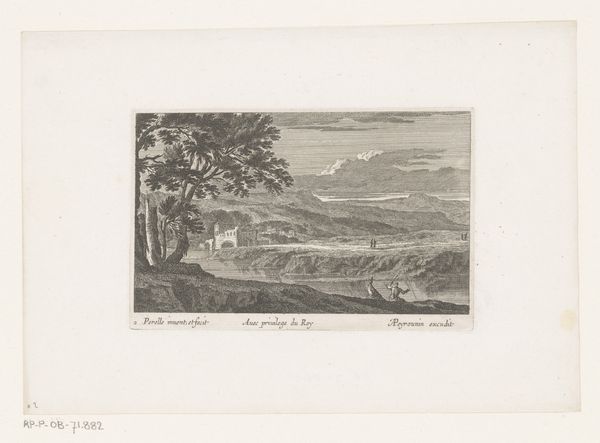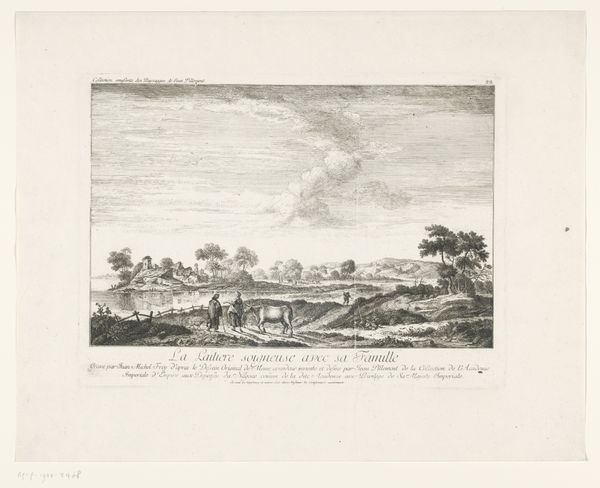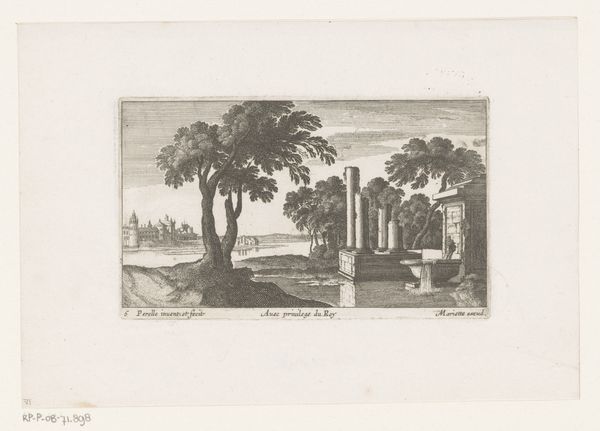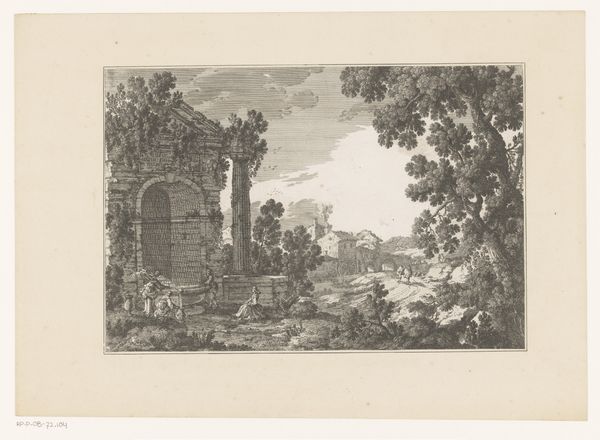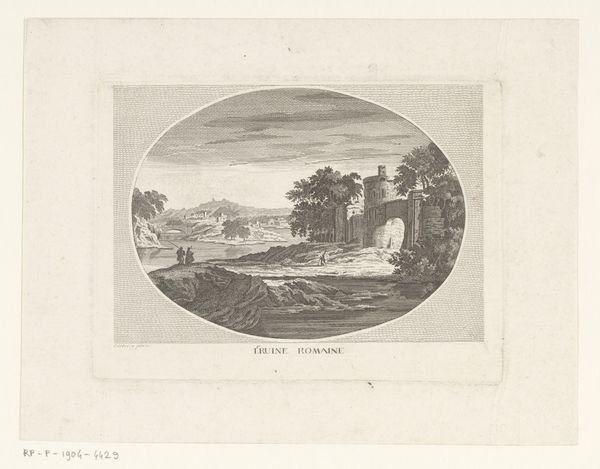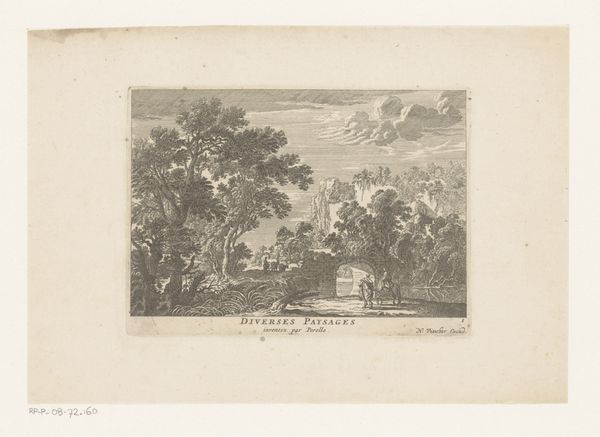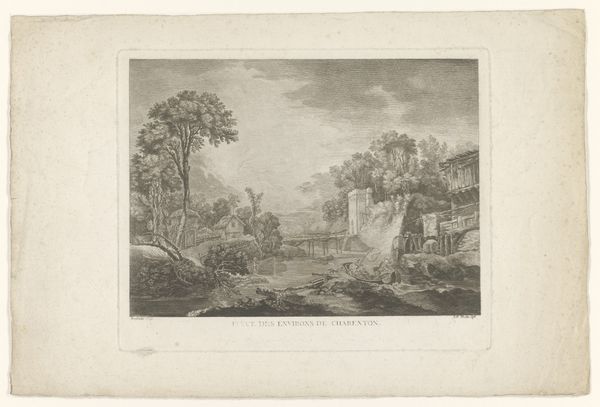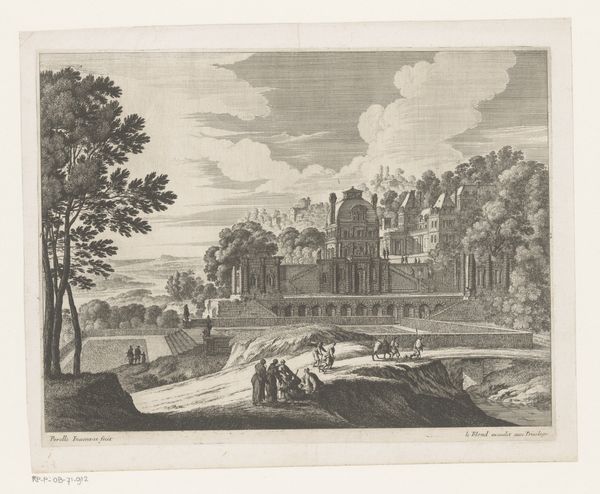
print, etching, engraving
#
baroque
# print
#
etching
#
old engraving style
#
landscape
#
engraving
Dimensions: height 107 mm, width 161 mm
Copyright: Rijks Museum: Open Domain
Curator: Let's take a moment to appreciate Nicolas Perelle's "Landscape with Walkers by a Stone Bridge." This print, an etching and engraving, dates from sometime between 1630 and 1666 and is currently housed at the Rijksmuseum. Editor: Hmm, my initial feeling is that this piece creates a very quiet, almost melancholic atmosphere, wouldn't you say? It is really visually intricate, the balance of the architectural element against the wildness of the landscape keeps my eye wandering back and forth. Curator: That perceived quietude is interesting when considered against the backdrop of the socio-political tensions brewing in Europe during that period. Landscape art became a coded space where anxieties about control, ownership, and freedom could be subtly explored. The very act of portraying land could symbolize claims to it. Editor: Ah, so the romanticized landscape becomes a loaded statement. I like the touch of irony. It kind of looks like a stage setting. Curator: Exactly. The bridge becomes not just a physical structure, but also a metaphor for transition and connection across potentially contested terrains. Note also the figures crossing that bridge: Their presence invites considerations of who is granted access and mobility, and under what terms. Class distinctions, privilege… it's all implied. Editor: Those little details elevate the landscape. And there's something inherently human about building bridges; a longing to connect contrasting worlds, just like Perelle's use of line contrasts heavy shadow with bright light. The figures could represent an attempt to find our place within a chaotic landscape, a journey of connection, both personal and within a broader scope. Curator: Precisely! The artistic choices made in depicting that landscape serve as lenses through which we can view the relationship between individuals, communities, and the environment during a time of upheaval. Editor: So this idyllic scene isn’t so idyllic after all. I love how the etching seems both romantic and unsettling at the same time. Curator: Indeed. When approaching artworks through such interpretive frameworks, the layers of meaning we unearth invite profound reflections on power, identity, and historical consciousness. Editor: Thinking about the landscape as political commentary gives the entire piece more weight, more presence than it would have originally held for me. Curator: Ultimately, understanding the complexities beneath even the most seemingly straightforward images can reshape how we understand both art history and the present.
Comments
No comments
Be the first to comment and join the conversation on the ultimate creative platform.
